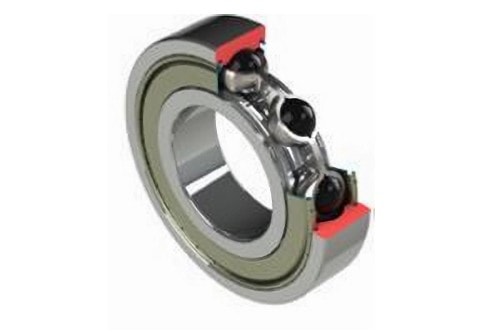The 9-Second Trick For Volution Bearing
The 9-Second Trick For Volution Bearing
Blog Article
What Does Volution Bearing Do?
Table of ContentsFascination About Volution Bearing8 Easy Facts About Volution Bearing ExplainedLittle Known Questions About Volution Bearing.What Does Volution Bearing Do?
An axial (or drive) bearing load is when pressure is parallel to the axis of the shaft. A radial bearing tons is when pressure is vertical to the shaft. After that a combination bearing load is when parallel and vertical forces produce an angular force relative to the shaft. Sphere bearings are made with round balls and can distribute lots over a medium-sized area.Below is a quick reference for the type of birthing tons and the finest ball bearing for the task: Radial (perpendicular to the shaft) and light loads: Select radial sphere bearings (likewise referred to as deep groove ball bearings). Radial bearings are some of the most usual kinds of bearings on the market.
The balls get in touch with the raceway at an angle which far better supports combination lots. Roller bearings are designed with round rollers that can disperse lots over a larger surface than sphere bearings. They often tend to work better for hefty load applications. Below is a fast recommendation for the kind of bearing tons and the very best roller bearing for the task: Radial (vertical to the shaft) loads: Pick basic round roller bearings Axial (propelled) (parallel to the shaft) lots: Choose cylindrical thrust bearings Combined, both radial and axial, lots: Pick a taper roller bearing The rotational rate of your application is the following element to check out when selecting a bearing - https://www.avitop.com/cs/members/volutionbearings.aspx.
They carry out far better at greater speeds and offer a higher rate range than roller bearings. One reason is that the contact between the rolling element and the raceways in a sphere bearing is a point rather than a line of call, like in roller bearings. Since rolling components press into the raceway as they roll over the surface, there is much less surface contortion occurring in the factor tons from ball bearings.
Volution Bearing Fundamentals Explained

If this happens, a basic and usual option is to switch over the ball bearing material from steel to ceramic. This maintains the bearing dimension the exact same yet offers about a 25% greater rate rating. Given that ceramic material is lighter than steel, ceramic balls generate less centrifugal force for any provided rate.
One reason is that the spheres are smaller and smaller balls evaluate much less and create less centrifugal pressure when revolving. Angular contact bearings likewise have an integrated preload on the bearings which collaborates with centrifugal pressures to correctly roll the spheres in the bearing. If you are developing a high-speed application, after that you'll want a high-precision bearing, usually within the ABEC 7 accuracy class.
Volution Bearing for Beginners
High accuracy bearings are reputable for applications that go fast because they make sure great ball and raceway communication.
Some applications, like cutting tool pins, will only enable a tiny deviation to occur on its rotating parts. If you are crafting an application like this, then pick a high precision bearing since it will create smaller system runouts due to the tight tolerances the bearing was produced to. Birthing strength is the resistance to the pressure that triggers the shaft to differ its axis and plays a key function in lessening shaft runout.

When the angular get in touch with bearings are mounted, the offset is gotten rid of which triggers the spheres to press into the raceway without any type of outdoors application pressure. This is called preloading and the procedure enhances bearing rigidity even prior to the bearing sees any kind of application pressures.
The 9-Second Trick For Volution Bearing
Lubrication develops a movie of oil in between the rolling component and the bearing raceway that aids protect against rubbing and overheating. The most usual kind of lubrication is oil, which includes an oil with a thickening agent. The thickening agent maintains the oil in position, so it won't leave the bearing.
After the rolling element passes by, the oil and thickening agent sign up with browse around these guys back with each other. For high-speed applications, understanding the speed at which the oil and thickener can divide and rejoin is very important. This is called the application or bearing n * dm value. Before you choose an oil, you require to discover your applications ndm value.
Compare your ndm worth to the oil's max rate value, situated on the datasheet. If your n * dm value is more than the grease max rate worth on the datasheet, after that the grease will not be able to give adequate lubrication and premature failing will certainly occur. An additional lubrication option for high-speed applications are oil haze systems which mix oil with pressed air and after that infuse it right into the bearing raceway at metered periods.
Report this page